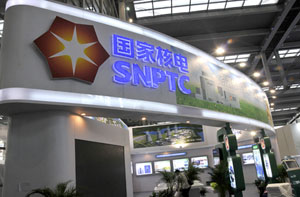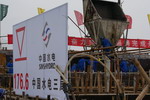World iron ore market heads for balance, Vale says
Updated: 2011-09-30 09:43
By Zhang Qi (China Daily)
|
|||||||||||
QINGDAO, Shandong - Global iron ore supply and demand will become more balanced during 2015-2017 as new capacity comes onstream, said an executive from the world's largest iron ore producer, Vale SA, on Thursday.
Prices might ease, then stabilize, as the expansion of the global iron ore supply involves huge challenges from delays and cancellations, Jose Carlos Martins, executive director of marketing, sales and strategy, told reporters in Qingdao, Shandong province.
"Our concern is how many projects will really be delivered and how many will meet their time and production targets."
His comments followed the release of analysts' forecasts of a surplus and lower prices starting in 2014.
Citigroup Inc estimated earlier this month that there would be a surplus of 50.6 million tons of iron ore in 2014, driven by increased output capacity.
Goldman Sachs Group Inc forecast average prices of $170 a ton next year, $160 a ton in 2013 and $125 a ton in 2014, mining analyst Marcelo Aguiar said this week in Brazil, according to Bloomberg News.
"We expect the iron ore market to remain tight as continuing urbanization and industrialization elsewhere in Asia, such as India and Southeast Asia, add new pressure to steel and raw material supplies.
"Other emerging markets in regions such as South America and Africa will bring new sources of demand," Martins said.
He also said Vale had held informal talks with Chinese companies on building a steel plant in Brazil.
"We are open to talks, we had several meetings yesterday, but there are not any formal talks so far," he said.
Of the 35 vessels that Vale is scheduled to take delivery of over the next two to three years, 16 ships are contracted to international shipowners that will operate them.
Arrangements for the remaining 19 are open to discussion with China or any other countries on a partnership basis, Martins said.
Baosteel Group earlier predicted global supply and demand for iron ore might reverse sooner than expected, as a flurry of investment in mining due to rising ore prices had resulted in a huge production expansion.
That will also end the global iron ore shortage, and the resulting oversupply will depress prices.
Brett Russell Sadler, acting deputy director-general of state initiatives of the Department of State Development in Western Australia, told a conference in Qingdao that there are eight projects under development in his state.
Sadler said that $3 billion was being spent each quarter on development in the Pilbara, Midwest and Yilgarn regions.
Sadler also said there are at least 30 projects in the advanced stages of planning in Western Australia, valued at more than $65 billion, and iron ore capacity will surpass demand in the coming years.
BHP Billiton Ltd is spending $7.4 billion on its operations in Western Australia's Pilbara region to boost output 64 percent to 220 million tons by 2014, while Rio Tinto PLC is expected to add 50 percent to its annual capacity by 2015.
Vale will add 48 percent to its capacity by 2015, taking the total to 469 million tons.
"Although the major mining companies have postponed their grand expansion plans, and investments by other mining companies have been increasing, we will see iron ore prices remain at a high level in the coming years," said Liu Xinquan, assistant to the president of Wuhan Iron and Steel (Group) Corp.
"Mining expansion requires large investments and long construction periods. The number of iron ore projects that can be put into commercial operation is very limited," Liu said.













